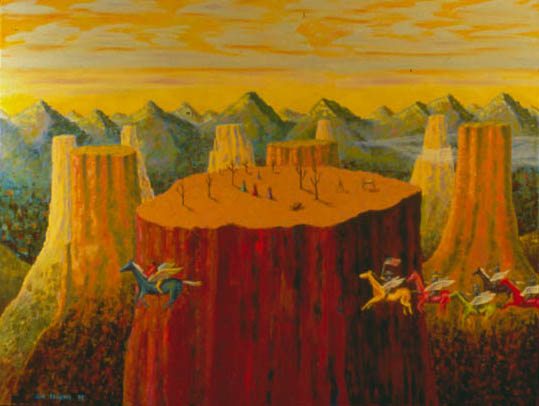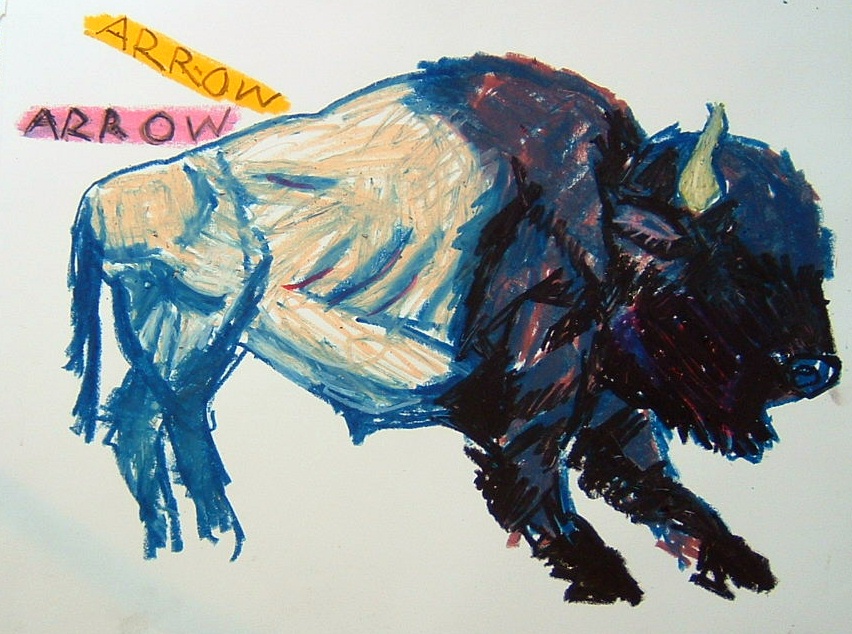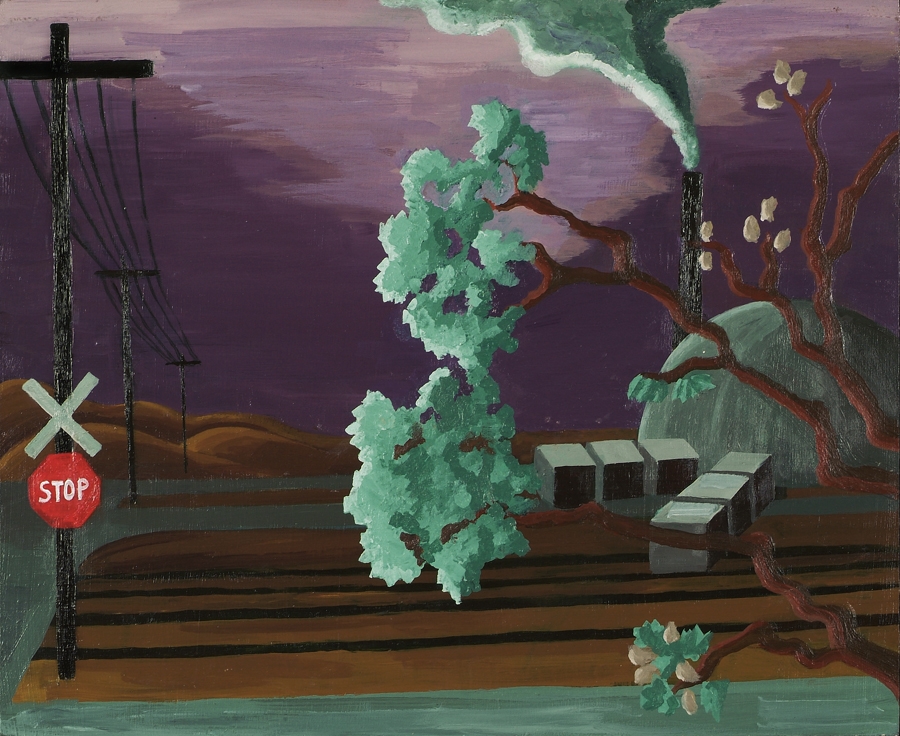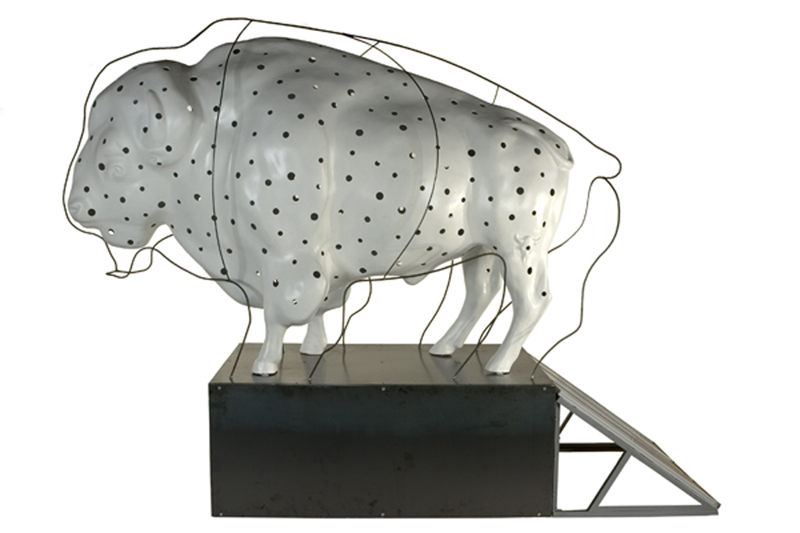A Band of Outsiders: Essay by Andrea Carlson
Acclaimed painter Andrea Carlson deconstructs the problems with catch-all categories like "ethnic" art.





AT A PIPE CEREMONY, I ONCE TEASED AN ELDER about his unorthodox way of conducting his invocations. The joke was (I always find myself needing to explain my humor) that I was undermining his authority at all–I don’t even have a pipe, let alone any kind of expertise about this ceremony.
He picked up on my musings and teased back, “Who are you, the culture cop?” What seemed like a funny comment at the moment led me to think: is what we are doing these days? I want “culture” to be something we contemplate and theorize on, something magically just out of our grasp and beyond anyone’s full ownership.
When one is in the moment–creating artwork or appreciating someone else’s–I find it hard to believe that one is self-consciously doing that as part of a specific cultural tradition. Did the Elder’s specific “cultural activity” start when he lit up his pipe; or was he aware of it while driving to the ceremony or when he fed the parking meter? When I paint a painting I don’t imagine myself offering it up to the thundering machine of culture… but maybe I should be more sensitive to it hovering around up there.
I can choke down “culture” as a sort of catch-all term for large, systemic human activity–if it is equitably applied to everyone. But attaching the adjective “ethnic” goes too far. Who considers themselves “ethnic”? When used in combination with words like art, food, music, and the like, that designation becomes discriminatory.
“Ethnic” art is suggestive of novelty, and the term carries the hint of an outsider mimicking a European tradition. It is a word with a locus, a position, a perspective. Whose art isn’t “ethnic”? Jackson Pollack’s? Belonging to the language of the dominant group, words like “cultural” and “ethnic” salute the prevailing majority.
These ideas were so intrusively given to us, embedded with agendas that don’t properly serve us. When we realize this, we become increasingly sensitive about the terms we use; we define them for ourselves and for our audiences and acknowledge their flaws a priori.
The collection I’ve assembled for mnartists.org ranges from work by those who romantically embrace their “nativeness” to those who make art without many obligations to their native identity. That said, the impetus for curating a collection of artwork solely around the ancestries of the artists is inherently problematic.
I don’t promote an artist’s work because their ancestry is an interest-generating novelty to others; I also don’t want to perpetuate the idea that art created under a vast, imaginary pan-category–such as “Native American”–can articulate a single aesthetic inclusive of all tribes.
All I ask of any viewer is that you question your own assumptions and questions–not that you fully accept mine.
CLICK HERE to browse through the varied work in the related collection of artwork curated by Andrea Carlson for mnartists.org.
About the curator: Andrea Carlson is a Minneapolis-based painter whose category-defying work has been exhibited throughout the state and, recently, in London’s October Gallery. You can see Carlson’s artwork and keep track of her upcoming exhibition schedule by visiting her website.